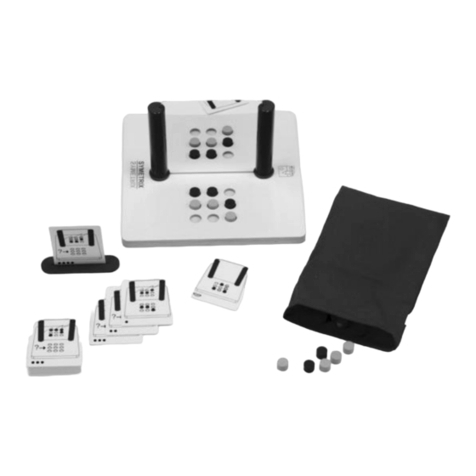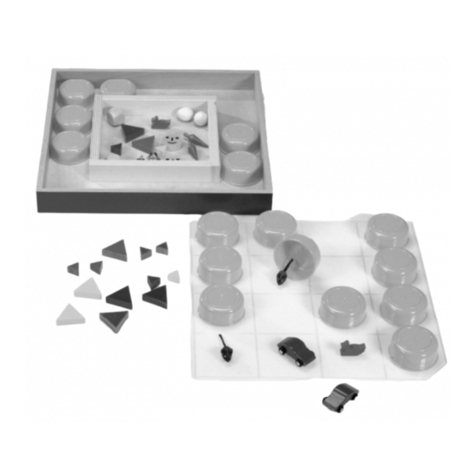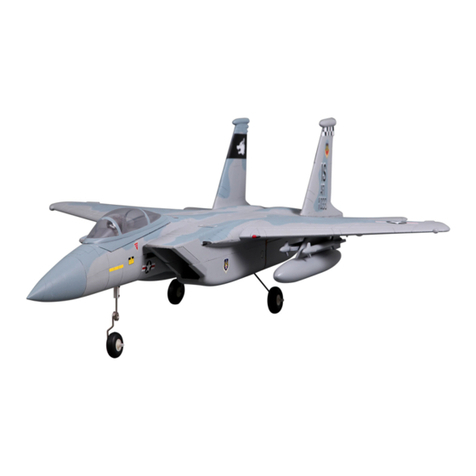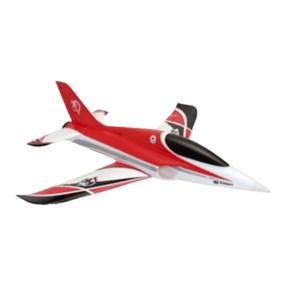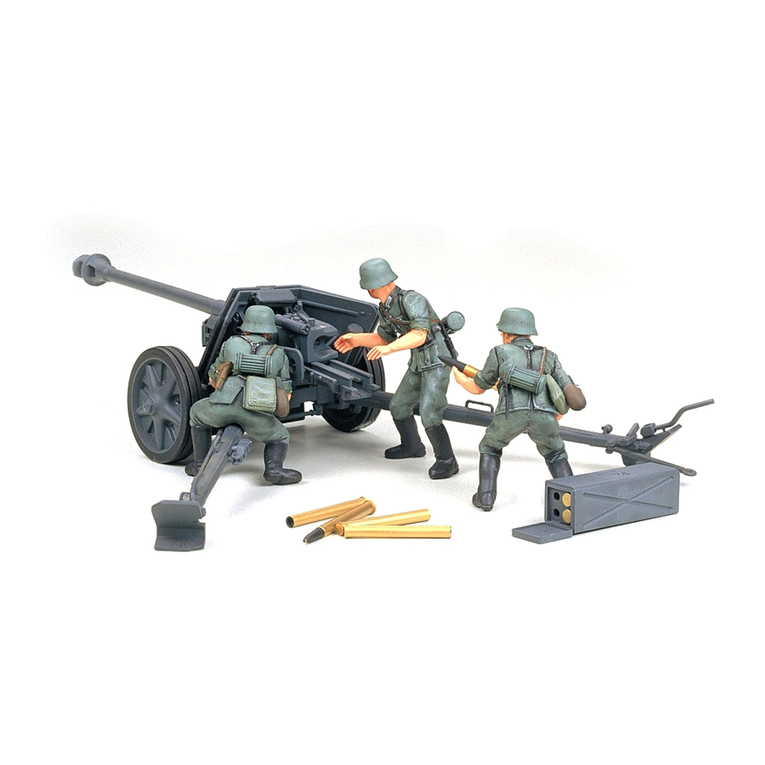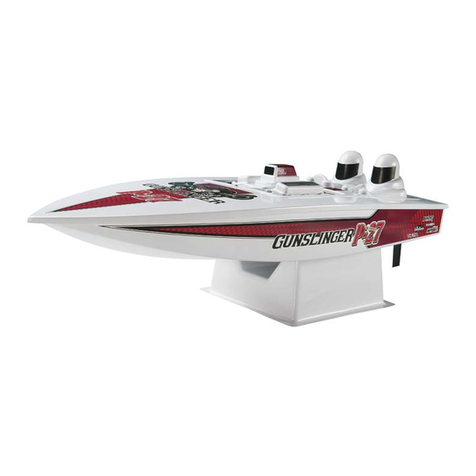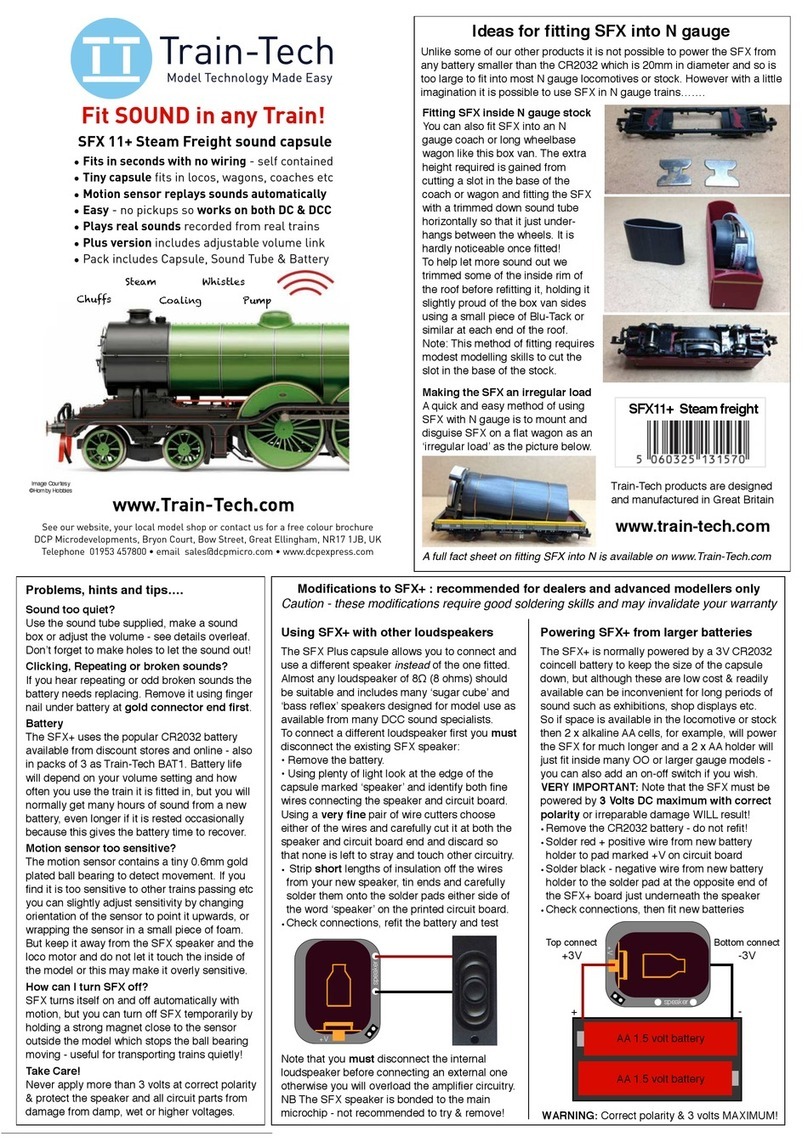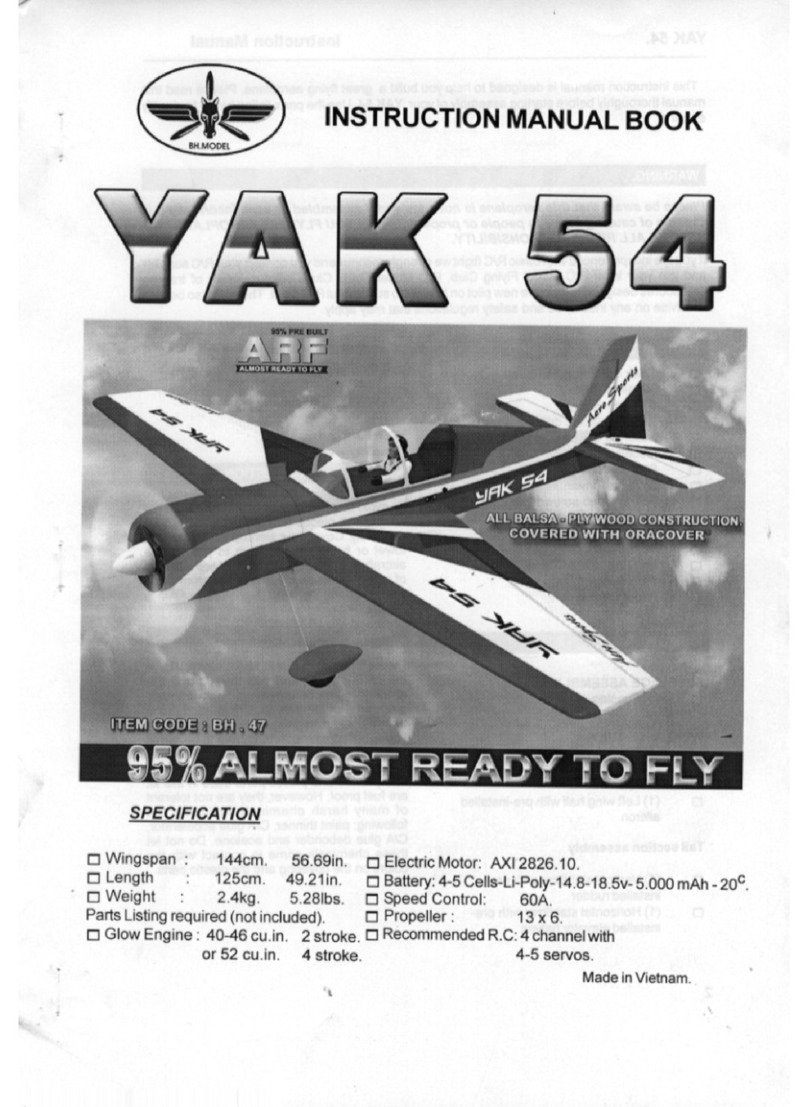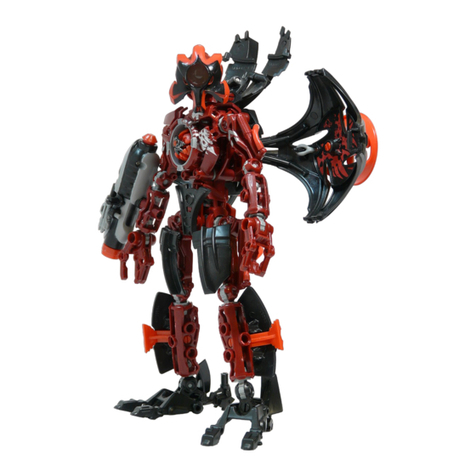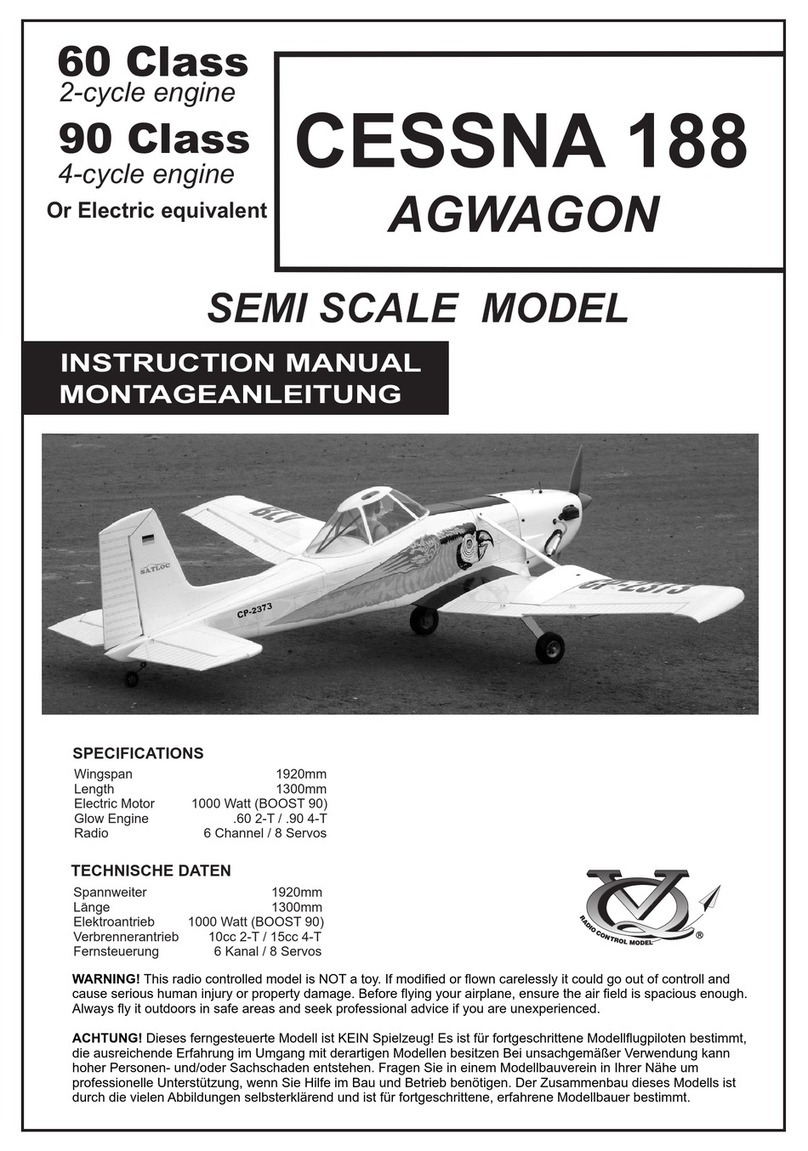Toys for life Atlantis User manual

Anleitung – handleiding – instructions – notice pédagogique
ATLANTIS

Wij feliciteren u met de aankoop van deze puzzel.
Om het uitnemen van de puzzelstukken te vergemakkelijken is
in de bodem van de kist een rond gat aangebracht. Door met
een vinger door dit gat de puzzel omhoog te drukken, kunnen
de stukken er eenvoudig worden uitgenomen.
Wij wensen u veel plezier met deze puzzel.
*****************************************************************************
We congratulate you on your choice.
In order to ensure long-lasting pleasure with this game, we
would like to advise you to take the pieces out of the box very
carefully. At the bottom of the wooden box you will find a hole,
placed there so that the central triangles can be lifted first.
We do hope the children will get much pleasure from this game.
*****************************************************************************
Wir gratulieren Ihnen herzlich zu Ihrem Kauf.
Zum Zweck der Entnahme der Puzzlestücke befindet sich ein
Loch an der Unterseite des Holzkastens um die Mitteldreiecke
anzuheben, und so das Herausnehmen zu erleichtern.
Wir wünschen Ihnen viel Spaß am Spiel.
*****************************************************************************
Nous vous félicitons de cet achat.
Afin de faciliter le déballage, nous avons prévu un trou au bas
de la boîte en bois, ce qui permet de soulever d’abord le
triangle du milieu.
Nous souhaitions à vos enfants beaucoup de plaisir et de joie
pendant le jeu.

Nederlands
3
Doelstelling:
Atlantis is een puzzel voor jonge kinderen. De natuurgetrouwe
tekeningen bieden veel gespreksstof en betekenen daardoor een
uitbreiding van de woordenschat.
Doordat de losse segmenten uit driehoeken bestaan, ontstaan er
allerlei geometrische figuren, die weer samengevoegd kunnen
worden tot één geheel, een grote zeshoek.
Het exact aanleggen van de losse stukken is een uitstekende
oefening van de fijne motoriek. Door het werken met puzzels wordt
de visuele waarneming geoefend. Het kind leert de onderdelen in
een groter verband zien en komt door analyse tot synthese.
Inhoud:
24 driehoeken (13 x 13 x 13 cm). De totale puzzel beslaat een
zeshoek; de zijden hebben een afmeting van 26 cm. Als de puzzel is
uitgelegd, is de maximale diameter 52 cm. De dikte van het hout
(MDF) is 0,6 cm. De puzzel wordt geleverd in een driehoekige kist
(30 x 30 x 30 x 5 cm) en is voorzien van een uitvoerige handleiding.
Werkwijze:
Atlantis wordt op een groepstafel of op de vloer uitgelegd. Het kind
kan met elk willekeurig stuk beginnen. Met twee stukken kan het al
een hele vis maken. Al puzzelend worden de randen van de grote
zeshoek zichtbaar. Als meerdere kinderen met Atlantis spelen,
zoekt elk kind steeds twee stukken die samen een vis vormen.
Samen kan de puzzel daarna in elkaar worden geschoven. De
buitenrand is daarbij een hulp.
Ook als de kinderen rondom de puzzel zitten, heeft elk kind toch
een goed overzicht, omdat de vissen de buitenrand als basis
hebben.
Mogelijkheden:
Voor de leerkracht is in de handleiding een lijst met informatie over
de afgebeelde vissen opgenomen.
Vragen van kinderen kunnen dus direct worden beantwoord. De
informatie in deze handleiding kan ook gebruikt worden bij
klassengesprekken, maar nog leuker is het voor de kinderen om zelf
de informatie op te zoeken in het documentatiecentrum of op het
internet.

Nederlands
4
Vissen die op de puzzel voorkomen (zie tekening op laatste
blz.):
1. Carcharhinus albimarginatus - Zilvertiphaai
Lengte ca. 3 meter.
Dit is een van de levendbarende soorten. Bij een lengte van
2,15 meter zijn ze volwassen. Bij de geboorte is het zevental
jongen al tussen de 55 en 80 cm lang.
2. Echeneis naucrates - Zuigvis of Remora
Lengte ca. 1 meter.
Haaien zoals vis 1, worden vaak vergezeld door zuigvissen.
Deze hebben een grote zuigschijf boven de ogen. Voedselresten
van de haai worden opgegeten. Bovendien heeft de zuigvis zo
een gratis lift. Zeeschildpadden zijn ook een geliefde
aanlegplaats.
3. Aulostomus chinensis - Chinese trompetvis
Lengte ca. 1 meter.
De trompetvis verstopt zich achter koralen, of grote vissen
(zoals vis 5). Soms zwemt hij daarbij zelfs ondersteboven.
Plotseling komt de trompetvis dan uit zijn dekking, om een klein
visje of een garnaal in zijn lange bek naar binnen te zuigen.
4. Balistes vetula - Koningin trekkervis
Lengte ca. 60 cm.
Deze trekkervis is bezig met een maaltje zee-egel. Die wordt bij
een stekel vastgepakt en van de grond losgetrokken. Dan laat
de trekkervis de zee-egel weer vallen, totdat die ondersteboven
ligt. Aan de onderkant zitten geen stekels en daar kan de
trekkervis met zijn sterke kaken de kalkschaal van de zee-egel
kapot bijten.
5. Mycteroperca tigris - Tijger zeebaars
Lengte ca. 1-2 meter.
Zeebaarzen zien er een beetje eng uit vanwege hun grote bek,
waarmee ze vis opslokken. In hun bek hebben ze meerdere rijen
tanden die allemaal maar één puntje hebben en die schuin naar
achteren staan. De groot wordende soorten worden meer dan
dertig jaar oud. Ze wonen altijd in hun eentje op het rif in een
hol.

Nederlands
5
Ze eten vissen die bijna even lang als hun kop zijn. Daarna
duurt het wel een paar dagen, of wel een week, voordat ze weer
honger hebben. Daarom zijn de meeste vissen niet zo bang als
ze een zeebaars zien. Ze blijven alleen maar een beetje uit de
buurt. Een vis die andere vissen eet noemen we een piscivoor.
(Vergelijk: herbivoor, carnivoor, omnivoor).
6. Odontodactylus scyllarus - Bidsprinkhaankreeft
Lengte ca. 12 cm.
In zijn zelfgegraven hol in het koraalzand zit de
bidsprinkhaankreeft op de loer. Zijn ogen staan op
steeltjes en zijn uitstekend. Aan het einde van zijn voorpoten
heeft de kreeft rode knotsen. Met die "bokshandschoenen" slaat
de kreeft bliksemsnel een kleine vis, of grote garnaal
bewusteloos. Deze wordt dan vastgegrepen en opgegeten.
7. Cephalopholis miniata - Rode koraalbaars
Lengte ca. 45 cm.
Deze rode koraalbaars lijkt wel een beetje op vis 5 en vis 14,
maar als je goed kijkt zie je de verschillen. Hij is veel roder en
heeft duidelijker blauwe stippen. Ook is hij niet zo dik. Zo af en
toe gaan ze eens een rondje zwemmen, om te kijken of er nog
iets te eten valt. Mannetjes hebben een harem in hun
territorium, maar elke vrouw woont in een ander hol.
Deze soort kun je nog wel eens zien in een openbaar aquarium,
omdat hij zo mooi is en niet zo groot wordt.
8. Zanclus cornutus - Masker wimpelvis
Lengte ca. 22 cm.
Wimpelvissen zwemmen in de natuur altijd in schooltjes, in
aquaria zijn ze vaak te agressief. De lange wimpel aan de rugvin
is een van de herkenningstekens: "wij horen bij elkaar". Ze
zoeken op het koraalrif naar kleine kokerwormen, poliepjes en
korte algen. Dat voedsel kun je in een aquarium moeilijk geven,
daarom zie je ze daar zelden.

Nederlands
6
9. Pterois miles - Koraalduivel
Lengte ca. 31 cm.
De koraalduivel is een heel statige zwemmer. Maar ook wel een
beetje een stiekemerd. Met zijn grote uitgespreide borstvinnen
drijft hij zijn prooi in een hoekje, waar ze niet meer wegkunnen.
Als hij dan dicht genoeg genaderd is slokt hij in milliseconden,
met zijn bek wagenwijd open een grote golf water en het
slachtoffer naar binnen. De rugvinstekels kunnen gif inspuiten.
De mannetjes gebruiken dit soms bij onderlinge gevechten. Bij
een mens kan dat gif hevige pijn veroorzaken, maar je gaat er
niet aan dood.
10. Tursiops truncatus - Tuimelaar
Lengte ca. 4 meter.
De tuimelaar dankt zijn naam aan zijn spectaculaire sprongen.
Het is een zoogdier en heeft geen kieuwen, maar longen. Voor
verse lucht moet het dier steeds naar de oppervlakte. Vrouwtjes
bevallen en zogen hun jongen onder water. De flippers lijken
sterk op de vinnen van haaien. Over het algemeen zijn dolfijnen
beter wendbaar en snellere zwemmers dan haaien.
11. Chromis analis - Geel zwaluwstaartje
Lengte ca. 13 cm.
In alle subtropische en tropische zeeën komen zwaluwstaartjes
voor. Meestal zwemmen ze in grote scholen rond uitstekende
stukken koraal, of langs rotskusten. Bij gevaar duiken ze weg in
alle gaten en hoeken. Mannetjes bewaken het legsel, dat
bijvoorbeeld op een schoon gepoetst stuk waaierkoraal vast-
geplakt wordt. Als na een paar dagen de jongen uitkomen, houdt
de broedzorg op en moeten de jongen hun weg vinden in het
plankton. Later kun je de meeste soorten tot in de havens
terugvinden en met brood voeren.
12. Oxymonacanthus longirostris - Oranje gevlekte vijlvis, langsnuit
vijlvis
Lengte ca. 10 cm.
Dit is net als vis 15 een soort trekkervis. Trekkervissen hebben
twee rugvinnen. De voorste heeft een stekel, en die kunnen ze
recht overeind vastzetten. Dat gewrichtje met de spiertjes
noemen ze het trekkermechanisme. Dit visje is te klein om zee-
egels te kraken. Hij zoekt zijn voedsel tussen het koraal. Als

Nederlands
7
extra bescherming heeft hij zoveel vlekjes, dat je z'n oog bijna
niet meer ziet.
13. Pomacanthus imperator - Keizersvis
Lengte ca. 38 cm.
De keizersvis is een zeer bekende koraalvis. Je zou het niet
geloven, maar als jong dier heeft hij blauwe, zwarte en witte
gebogen strepen op zijn lijf. Deze vis is niet te eten, want hij eet
onder andere sponzen, en daardoor smaakt hij vies.
14. Cephalopholis fulva - Konny-zeebaars
Lengte ca. 30 cm.
Zo kijkt de zeebaars zijn prooi aan, vlak voordat hij hem opslokt.
Grote garnalen verdwijnen in de bek. Bij hevige opwinding kleurt
de rug rood en de buik wordt wat wittig. Deze soort leeft tot op
meer dan 150 meter diepte. Hij smaakt prima.
15. Holacanthus tricolor - Hertogsvis
Lengte ca. 25 cm.
Bij deze hertogsvis kun je mooi alle vinnen zien. In het midden
op de rug staat de rugvin. In het midden aan het eind zit de
staartvin. Aan de onderkant achteraan, met een beetje zwart, zit
de aarsvin, of anale vin. Ook aan de onderkant, maar naar links
en rechts uitstekend zitten twee buikvinnen. Daarboven zit aan
elke zijde een borstvin. De soortnaam tricolor duidt op drie
kleuren: geel, zwart en blauw in het oog.
16. Naso lituratus - Koekopvis
Lengte ca. 45 cm.
De opvallende kleuren en verlengde staartvinstralen zijn
herkenningstekens van de in scholen levende koekopvissen. Ze
horen bij de familie van de doktersvissen. Doktersvissen hebben
scherpe stekels aan de zijkant, die ze bij gevaar uitklappen. Ze
zwemmen dan dreigend vlak langs de belager en zwiepen flink
met hun staart. De plaats waar het "doktersmesje" zit heeft
meestal een contrasterende kleur.
17. Pygoplitus diacanthus - Pauwoogkeizersvis
Lengte ca. 30 cm.
De opvallende kleuren van deze vis lijken elke viseter uit te
dagen. En toch, de omtrek van de vis is niet zo duidelijk. De
pauwvlek in de rugvin van de jonge vis lijkt op een oog, dus dat

Nederlands
8
lijkt de voorkant van de vis. Maar, de pauwoogkeizersvis zwemt
bij gevaar toch echt vooruit. De piscivoor grijpt er dan naast.
Later wordt die vlek een prachtige blauwe lap.
18. Larabicus quadrilineatus - Rode zee poetsvis
Lengte ca. 12 cm.
Zo af en toe hebben vissen onderling wel eens ruzie, om eten,
een lekker plekje op het rif, of om een aantrekkelijke
echtgenoot. Als ze alle twee even vastbesloten zijn om voor hun
belangen op te komen, gaan ze soms een bekgevecht aan.
19. Lactophrys polygonia -"Veelhoek" koffervis
Lengte ca. 48 cm.
Zo heel erg soepel ziet de koffervis er niet uit. Dat komt door
zijn stevige pantser. De anale vin en rugvin zijn daarentegen
uiterst beweeglijk. Zo kan de koffervis toch alle kanten op.
20. Holacanthus ciliaris - Gekroonde engelvis
Lengte ca. 25 cm.
De gekroonde engelvis komt uit hetzelfde geslacht als vis 15. Dit
is een man op zijn mooist uitgekleurd, in bruiloftskleed.
21. Nautilus scrobiculatus - Nautilus
Doorsnede tot 20 cm.
De nautilus is geen vis, maar een soort inktvis uit de stam van
de weekdieren (slakken, schelpen en inktvissen). Hij heeft acht
korte vangarmen, een paar goede ogen en een spiraalvormig
huis van kalk. De nautilus leeft diep in zee. Door opgelost gas in
zijn bloed in een gaskamertje te laten vrijkomen vergroot hij zijn
drijfvermogen en stijgt op. Deze dieren leven maar een paar
jaar.
22. Thalassoma bifasciatum - Blauwkoplipvis
Lengte ca. 15 cm.
Deze hele groep visjes bestaat uit alleen maar vrouwtjes. De
naam slaat op de mannelijke vis en die heeft bovendien een
zwartwitte halsband en een groen lijf. Vrouwtjes veranderen
later, als ze groot genoeg zijn, in mannetjes! Dan verandert hun
kleur ook.
23. Sparisoma viride - Stoplicht-papegaaivis
Lengte ca. 51 cm.

Nederlands
9
Deze vis heeft zijn populaire naam te danken aan het feit dat de
mannetjes groen zijn en de vrouwtjes rood. De tanden in zowel
onder- als bovenkaak zijn vergroeid tot een geheel. De stevige
snavelvormige bek wordt gebruikt bij het afbijten van stukjes
koraal. Achter in de bek wordt het koraal verder vermalen. De
levende koraalpoliepen dienen als voedsel. Het koraalgruis
wordt uitgespuugd en belandt op de bodem.
24. Eretmochelys imbricata - Karetschildpad
Rugschildlengte tot meer dan 1 meter.
De karetschildpad hoort bij de klasse van de reptielen. Het is het
enige dier op deze puzzel, dat eieren boven water, op het
strand, moet leggen. De daarvoor geschikte rustige legstranden
zijn zeldzaam, vaak zitten er al toeristen. Alle soorten zeeschild-
padden zijn bedreigd en worden wettelijk beschermd.
Zeeschildpadden eten kwallen, schelpdieren, zeegras,
groenwieren en aas.
25. Chaetodon ocellatus - Vinvlek koraalvlinder
Lengte ca. 19 cm.
Ook deze koraalvlinder heeft een misleidende oogvlek. De
wetenschappelijke geslachtsnaam betekent letterlijk
"borsteltand". In zijn bek zitten er tientallen, en die komen goed
van pas bij het afraspen van kleine vastzittende diertjes die
worden opgegeten.
26. Scarus ferrugineus - Papegaaivis
Lengte ca. 41 cm.
Dit is een van de papegaaivissoorten afkomstig uit de Rode
Zee en de kusten van Oost-Afrika. Behalve koralen en andere
lagere dieren eten ze ook algen. De naam slaat op de roestige
roodbruine kleur van het volwassen mannetje.
27. Chaetodon paucifasciatus - Rode zee koraalvlinder
Lengte ca. 15 cm.
Koraalvlinders zwemmen vaak in paartjes over het rif. Ze
zoeken hun voedsel tussen koralen en wieren en volgen daarbij
vaste routes. Elke grote tropische zee, of golf heeft wel een
aantal kenmerkende soorten koraalvlinders.

Nederlands
10
28. Anthias squamipinnis - Rood vlagbaarsje, rode kanarie
Lengte ca. 10 cm.
De rode vlagbaarsjes leven in schoolverband op de rifhelling.
Vaak onder overhangende stukken rotsen, of uitstekende
koraalpartijen. Meestal wordt de school aangevoerd door een
dominant mannetje. Gaat deze dood, dan kan een van de
grotere vrouwtjes veranderen in een mannetje.
29. Cetoscarus bicolor - Oranjehals papegaaivis
Lengte ca. 80 cm.
De jongen van deze pa en ma papegaaivis zijn wit, met een
oranje halsband. Alweer zie je, dat de populaire naam, die hier
op een jeugdkleed slaat, misleidend kan zijn.
30. Parupeneus forskalli - Forskall's zeebarbeel
Lengte ca. 28 cm.
Zeebarbelen zijn vriendelijke vissen met twee baarddraden
onder aan de kin. Dat is een tastorgaan, waarmee ze snel
voedseldiertjes op en in de bodem herkennen. Daarna duiken ze
vaak tot aan hun ogen in het zand om het voedseldiertje te
vangen. Het zand wordt weer uitgespuwd. Meneer Forskall was
een visdeskundige, een ichthyoloog, die veel zeevissen voor het
eerst heeft verzameld en beschreven. Als bedankje is er één
naar hem genoemd.
31. Halichoerus hortulanus - Lipvis
Lengte ca. 22 cm.
De algenweide bevat voor veel vissen aantrekkelijk voedsel.
Deze lipvis afkomstig uit de Indische en Grote oceaan zoekt er
voornamelijk ongewervelde diertjes tussenuit. Ze leven op zand-
en koraalgruisbodems, dat zijn bij uitstek de plaatsen waar
grotere wieren en zeegrassen groeien.
32. Enoplosus armatus - "Verlengde maanvis"
Lengte ca. 12 cm.
Deze vis lijkt veel op de echte maanvis uit het Amazonegebied.
Als je daar een plaatje van kunt vinden, dan zul je zien dat er
verschillen zijn. Het lijkt net alsof er een stukje tussen in
gebouwd is. En, de vis heeft twee rugvinnen. In de natuur
zwemmen deze vissen in scholen op het rif bij Australië.

Nederlands
11
33. Amphiprion bicinctus - Tweeband anemoonvis
Lengte ca. 14 cm.
Dit is een van de wel 20 verschillende soorten anemoonvissen.
Een symbiose-anemoon is geen plant, maar een soort kwal, die
vast blijft zitten op de bodem. Anemoonvissen bewonen met een
clubje van één vrouwtje en meerdere mannetjes zo'n anemoon
zonder dat ze geneteld worden. Het vrouwtje wordt het grootst
en legt bijna elke twee weken eieren. Wordt ze bij het voedsel
verzamelen zelf opgegeten dan verandert het grootste mannetje
in een paar weken in een functioneel vrouwtje.
34. Aspidontus taeniatus - Valse poetsvis
Lengte ca. 13 cm.
Vanuit een vast punt op het rif nadert de echte poetsvis op zijn
staart dansend zijn klanten. Vaak zijn dat grote keizersvissen,
papegaaivissen en zeebaarzen. Die komen langszij om zich van
parasieten te laten ontdoen, want de poetsvis eet deze. De
valse poetsvis gedraagt zich net zo. Maar vaak neemt hij nog
liever een smakelijk stukje vin of huid.
Illustraties: Eke van Mansvelt
Met medewerking van:
Drs. W. Wilhelm, wetenschappelijk medewerker koudbloedige
dieren, Natura Artis Magistra, Amsterdam.
Bestelnr.: 3.848.00

English
12
Objective:
Atlantis is a puzzle for young children. The realistic drawings offer
many possibilities for discussion and thus, help to develop the
child's vocabulary.
Many different geometric shapes appear when the child works with
the triangular puzzle segments. When put together, they form one
large hexagon.
Exact matching of the segments of the puzzle is an excellent
exercise for small motor development. The puzzle also helps to
improve visual perception. The child learns to see the parts
(analysis) in relation to the main idea (synthesis).
Contents:
24 triangles. The complete puzzle takes the shape of a hexagon.
When the puzzle has been put together, its maximum diameter
measures 52 cm. The wood (MDF) is 0.6 cm thick. The puzzle is
packed in a triangular wooden box (30 x 30 x 30 x 5 cm) and
supplied with instructions.
How to use Atlantis:
Atlantis is placed on a group table or on the floor. The child starts
with any of the puzzle segments. With only two segments he/she
can create a complete picture of a fish. The sides of the large
hexagon will gradually become visible during the exercise. If more
players use Atlantis, each child first looks for two segments to
form one fish. The hexagonal shape will help children to put all the
parts of the puzzle together. Even if children sit in a circle around
the puzzle, a good general view will be maintained as all fish use
the edge of the puzzle.
Possibilities:
A list with information about the fish is included in the instructions
for the teacher's use.
This list will help to give direct answers to children's questions.
The information in this instruction booklet can also be used during
the class discussions.

English
13
However, it is even more fun if children can look up the
information themselves in the school library, resource center or on
the internet.
Fish depicted in Atlantis (see drawing on last page):
1. Carcharhinus albimarginatus - Silvertip shark
Length approximately 3 metres.
This type bears live offspring. They reach adulthood with a
length of 2.15 metres. At birth, the seven baby sharks are
between 55 and 80 cm. long.
2. Echeneis naucrates - Remora
Length approximately 1 metre.
Sharks such as fish 1 often travel in the company of remoras.
These have a large "suction cup" above their eyes. They eat
food left over by the sharks. Moreover, the remora gets a free
ride. They also like to use sea turtles as a port of call.
3. Aulostomus chinensis - Trumpet Fish
Length approximately 1 metre.
The trumpet fish hides behind coral or large fish (such as fish
5). Occasionally it swims along upside-down. Suddenly, the
trumpet fish emerges from concealment to suck in a small fish
or a shrimp through its long mouth.
4. Balistes vetula - Queen Trigger Fish
Length approximately 60 cm.
This trigger fish is eating a meal of sea urchin. It grabs the
bristles and pulls it free from the bottom. Then the trigger fish
lets the sea urchin fall, until it is lying upside-down. There are
no bristles on the underside. There, using its strong jaws, the
trigger fish breaks open the cartilaginous shell of the sea
urchin.
5. Mycteroperca tigris - Tiger Grouper
Length approximately 1-2 metres.
Sea bass look odd because of their large mouths, used to
swallow fish. Their mouths contain several rows of teeth, all of
which have only a single edge slanting diagonally to the rear.
The larger species live to the age of thirty. They live alone on
a reef in a cave. They eat fish that are approximately the

English
14
lengths of their own heads. A single meal can last them days,
even a week. That is why most fish are not frightened when
they see a sea bass. They keep their distance. We refer fish
that eat other fish as a piscivore (Compare: herbivore,
carnivore, omnivore).
6. Odontodactylus scyllarus - Mantis Shrimp
Length approximately 12 cm.
In a hole in the coral sand that it has dug itself, the mantis
shrimp lies in wait. Its eyes rest on stems, giving it excellent
vision. There are red, club-like tips on the ends of the shrimp's
front legs. Using these "boxing gloves" with lightning speed,
the shrimp can knock small fish or large shrimps unconscious,
which it then seizes and devours.
7. Cephalopholis miniata - Red Grouper
Length approximately 45 cm.
This red-coloured coral bass bears a resemblance to fish 5
and fish 14. When you look closely, however, the differences
are clear. Its colour is much more red and it has distinct, blue
dots. Nor is it as heavy. Now and then they swim around,
looking for food. The males keep a harem in their territory, but
each female lives in a different cave. You can see this species
occasionally in public aquariums, since it is so beautiful and
not particularly large.
8. Zanclus cornutus - Moorish Idol
Length approximately 22 cm.
In their natural environment, Moorish idols always travel in
schools. In aquariums they are often too aggressive. The long
streamer on the dorsal fin is a recognizable feature. 'We
belong together'. They search the coral reef for small caddis
worms, polyps and short algae. Since this type of food is
difficult to provide for aquariums, one seldom sees them there.

English
15
9. Pterois miles - Lion Fish / Turkey Fish
Length approximately 31 cm.
The Lion Fish is a stately swimmer. It is also rather sneaky. By
spreading its large breast fins, it drives its prey into a corner
where it cannot escape. It then approaches until it is within
range. It opens its mouth wide and in a matter of milliseconds
sucks in a huge quantity of water, along with its victim. The
bristles on the dorsal fin release a poison. The males
sometimes make use of it while fighting. The poison can cause
extreme pain in human beings, but it is not fatal.
10. Tursiops truncatus - Bottle Nose Dolphin
Length approximately 4 metres.
The Bottle Nose Dolphin owes its name to its oddly-shaped
snout that resembles an original gin bottle. A mammal, it has
lungs instead of gills. It must continually surface for fresh air.
The females bear and nurse their young under water. The
flippers bear a strong resemblance to the fins of a shark.
Generally, dolphins manoeuvre and swim better than sharks.
11. Chromis analis - Yellow Damsel Fish
Length approximately 13 cm.
Yellow Damsel Fishes inhabit all tropical and subtropical seas.
They usually travel in large schools around extended pieces of
coral or along rocky coasts. When danger appears, they
disappear into crevices and gaps. The males guard the eggs.
They may affix them to a smoothly polished piece of fan coral.
The eggs hatch in a few days, the breeding ritual ends. The
young fish must now find their own way through the plankton.
Later, you can find most species right up to the harbours,
where you can feed them with bread.
12. Oxymonacanthus longirostris - Long-nosed File Fish
Length approximately 10 cm.
This fish resembles a trigger fish, as fish 15. Trigger fish have
double dorsal fins. The front one has a spiny bristle and can
stand perfectly erect. The muscle joints are called the trigger
mechanism. This fish is too small to crack open sea urchins. It
looks for food between the coral. Because of its protective,
spotty colouring, you can hardly see its eyes.

English
16
13. Pomacanthus imperator - Emperor Angel Fish
Length approximately 38 cm.
The emperor angle fish is an extremely well known coral fish.
Although hard to believe, when it is young it has only blue,
black and white curved stripes on its body. This fish is not for
eating, since it also eats such things as sponges, which gives
it a very unpleasant taste.
14. Cephalopholis fulva - Coney Grouper
Length approximately 30 cm.
This is how the sea bass surveys its prey, right before it
swallows it. Large shrimps vanish through its mouth. When it
gets excited, its back turns red and its belly slightly white. This
species lives at depths of 150 metres. It tastes superb.
15. Holacanthus tricolor - Rock Beauty
Length approximately 25 cm.
The fins of this rock beauty are clearly visible. The dorsal fin is
in the middle of the spine. The tail or caudal fin is in the middle
at one end. The arse or anal fin, which is slightly black, is on
the underside at the rear. The two belly fins are also on the
underside but are situated on either side. Above them on both
sides are the breast fins. The species name, Tricolor, refers to
the three colours of the eyes: yellow, black and blue.
16. Naso lituratus - Smooth-headed Unicorn Fish
Length approximately 45 cm.
The striking colours and extended tail fin rays serve to identify
a school of smooth-headed unicorn fish. They belong to the
"doctor fish" family. "Doctor fish" have sharp bristles on their
sides, which they extend at signs of danger. They swim
menacingly close to the attacker, whipping their tail fins. The
location of the "doctor's scalpel" usually has a contrasting
colour.
17. Pygoplitus diacanthus - Regal Angel Fish
Length approximately 30 cm.
The striking colours of this fish seem to invite the attention of
fish eaters. And yet, the circumference of the fish is not well
defined. The peacock spot on the dorsal fin of the young fish
looks like an eye, as though that is the front of the fish. When

English
17
there is danger, however, the regal angel fish swims forwards.
The piscivore misses its prey. In time, the spot turns into a
splendid blue splotch.
18. Larabicus quadrilineatus - Fourline Wrasse
Length approximately 12 cm.
Now and then fish fight among themselves, for food, a prize
spot on the reef, or an attractive mate. When both decide to
fight for their interests, they sometimes fight with their mouths.
19. Lactophrys polygonia - Boxfish
Length approximately 48 cm.
The boxfish does not look especially supple. It has heavy
armour plating. In contrast, the anal and dorsal fins are very
flexible. In this way, the boxfish can move in all directions.
20. Holacanthus ciliaris - Queen Angel Fish
Length approximately 25 cm.
The queen angel fish comes from the same family as fish 15. It
is a male with brilliant colours, dressed for a wedding.
21. Nautilus scrobiculatus - Nautilus
Cross section up to 20 cm.
The nautilus is not a fish, but a type of octopus from the
mollusc family (snails, shellfish and octopuses). It has eight
short tentacles, excellent vision and a spiral-shaped
cartilaginous shell. The nautilus' habitat is deep in the sea.
When gas in its bloodstream dissolves and releases into a gas
chamber, its flotation capability increases and it rises. They
live only a few years.
22. Thalassoma bifasciatum - Blueheads
Length approximately 15 cm.
This group of fish consists entirely of females. The name
refers to the male, which also has a black-and-white neck
band and a green body. When they reach a certain size, the
females change into males, changing colour as well!

English
18
23. Sparisoma viride - Stoplight Parrot Fish
Length approximately 51 cm.
This fish's common name derives from the fact that the males
are coloured green and the females, red. The upper and lower
teeth grow together, forming a whole. It uses its robust beak-
shaped mouth to bite off pieces of coral, which are then further
ground at the back of the mouth. The live coral polyps provide
nourishment. It spits out the coral grit, which falls to the sea
bed.
24. Eretmochelys imbricata - Hawksbill Turtle
Length of upper shell up to longer than 1 metre.
The hawksbill turtle belongs to the reptile family. It is the only
animal in this puzzle that must lay its eggs out of the water, in
the sand. Suitable, remote, abandoned stretches of beach are
hard to find. There are often too many tourists. All turtles are
considered endangered species, protected by law.
Sea turtles eat jelly fish, shellfish, seaweed, green algae and
carrion.
25. Chaetodon ocellatus - Spotfin Butterfly Fish
Length approximately 19 cm.
This butterfly fish also has a deceptive eye spot. The scientific
name means literally "brush tooth". The many teeth come in
handy for pulling loose small animals, which they then eat.
26. Scarus ferrugineus - Rusty Parrot Fish
Length approximately 41 cm.
This type of parrot fish originates in the Red Sea and along the
East African coast. Besides coral and other lower animals,
they also eat algae. The name refers to the rust-brown colour
of the adult male.
27. Chaetodon paucifasciatus - Crown Butterfly Fish
Length approximately 15 cm.
Crown butterfly fish often swim in pairs across the reef. They
search for food between the corals and algae, following fixed
routes. Each large tropical sea or gulf has several distinctive
species of crown butterfly fish.

English
19
28. Anthias squamipinnis - Red Coral Perch
Length approximately 10 cm.
The red coral perch lives in schools on the reef slopes, often
beneath overhanging rocks or jutting patches of coral. Usually,
a dominant male leads the school. When he dies, one of the
larger females may change into a male.
29. Cetoscarus bicolor - Bi-colour Parrot Fish
Length approximately 80 cm.
The young of mom and dad parrot fish are white, with an
orange neck band. Again, we see that the common name used
for the young can be misleading.
30. Parupeneus forskalli - Forskall's Goat Fish
Length approximately 28 cm.
Sea goat fishes are friendly types with two bearded threads
under the chin. These are taste buds used for rapid
identification of edible animals on the sea bed. They then dive
sometimes until their eyes meet the sand to catch an edible
animal. Afterwards, they expectorate the sand. Mr Forskall
was an expert on fish, an ichthylogist, who was the first to
collect and describe various species of fish. In
commemoration, one was named after him.
31. Halichoerus hortulanus - Checkerboard Wrasse
Length approximately 22 cm.
Algae fields provide good sources of food for many fishes. The
checkerboard wrasse comes from the Indian and Pacific
oceans. It looks primarily for intervertebrates. These live on
sandy and coral grit sea beds, ideal growing places for algae
and sea grass.
32. Enoplosus armatus - Old Wife
Length approximately 12 cm.
This fish bears a strong resemblance to the authentic moon
fish from the Amazons. If you look at a picture, you'll see that
there are various kinds. Apparently a piece has been added in
the middle. The fish has two dorsal fins. In their natural
environment, these fish swim in schools around a reef near
Australia.

English
20
33. Amphiprion bicinctus - Two-banded Anemone Fish
Length approximately 14 cm.
This is one of some twenty different species of anemone fish.
A symbiosis anemone is not a plant, but a type of jelly fish that
stays on the sea bed. Anemone fish live in a society of one
female and several males on such an anemone, without being
pricked. The female is the largest, laying her eggs every two
weeks as a rule. If she is accidentally eaten during the food
gathering process, the largest male then changes into a
functional female several weeks later.
34. Aspidontus taeniatus - False Cleaner Wrasse
Length approximately 13 cm.
From a fixed point on the reef, an authentic cleaner wrasse
approaches its clients while "dancing" on its "tail". Frequently,
these are large emperor fish, parrot fish and the sea bass.
They go alongside them to get rid of parasites, which the
cleaner wrasse eats. The false cleaner wrasse behaves in the
same way, but often prefers to chew on a delicious piece of fin
or skin.
Illustrations: Eke van Mansvelt
With special thanks to:
W. Wilhelm, scientific assistant for cold-blooded animals, Natura
Artis Magistra, Amsterdam, Holland.
Article no.: 3.848.00
Table of contents
Languages:
Other Toys for life Toy manuals

